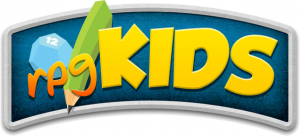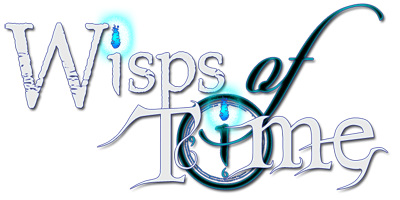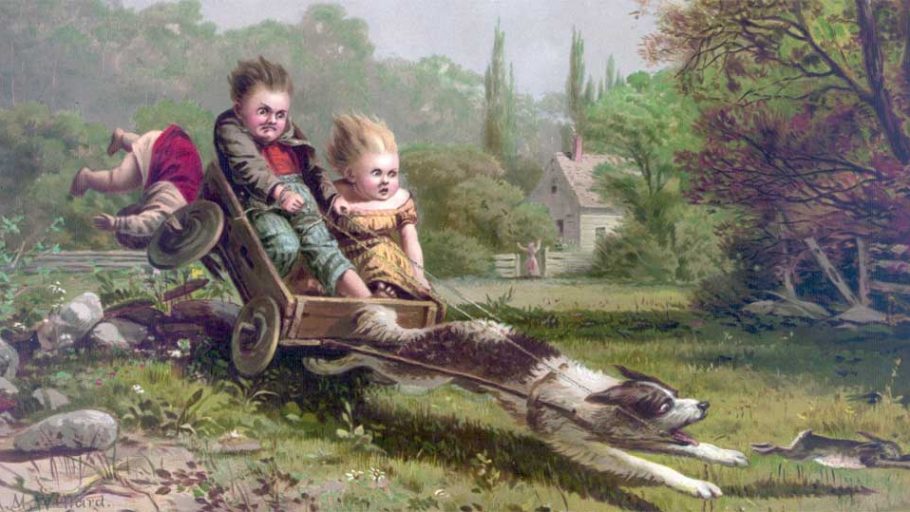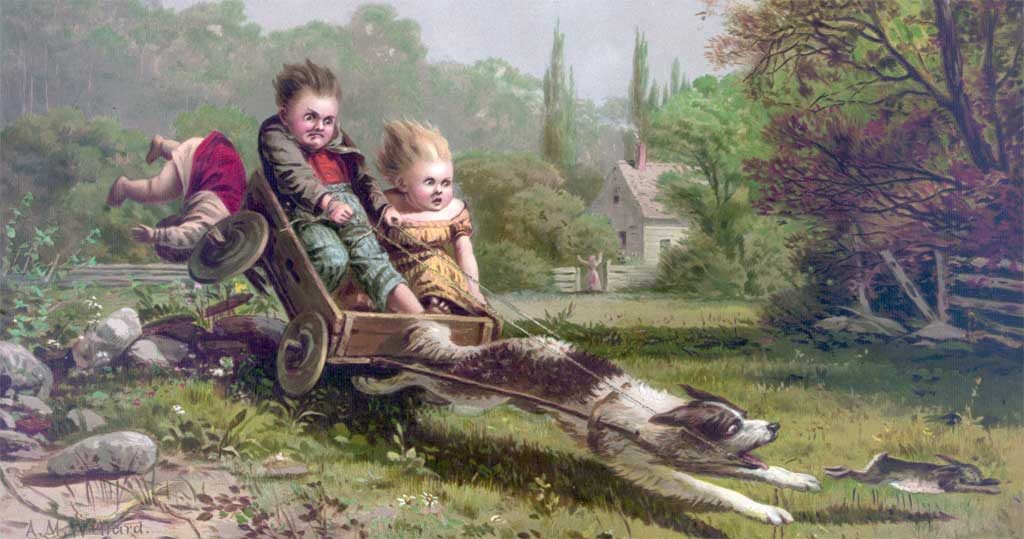I’ve mentioned several times now how I came to find myself reinvested in tabletop games as a working adult after not having played for nearly two decades. It all started because of my eldest two children, who I’ll call Sarah (girl, age 4 and three quarters-ish) and James (boy, aged 3 and a half-ish). We sat around James’ train table, playing with wooden trains and My Little Pony characters, interrupted only by the occasional bout of interference from a roaming space ranger or tyrannosaurus. I was essentially leading them in their play, and they would ask questions or respond in kind to my prompts, and it hit me, quite abruptly, that we were essentially engaged in a free-form, collaborative, storytelling-style role-playing game. Sure, we weren’t following a printed rule set, but the rules were there just the same: “No, Sarah, you can’t just smash James’ Shining Armor pony with the T-Rex,” and the physical action was negated from the story (house rules by Dad the Game Master). In the end, the ponies saved the runaway Polar Express train full of orphaned children from the giant, carnivorous dinosaur, recovered Princess Cadence’s crown, and received the First Gift of Christmas as their reward. And, as fate would have it, the scene was set for Dad to take things to the next level.
I knew James was still a tad young and extremely, err.. not still, but he’s always been ahead on milestones like walking and talking and potty training, so I thought he had a pretty good chance of grasping it all, if I could keep him in his seat. Sarah, though, I was sure she was ready from watching her at play, both by herself and with James. She has no problem taking on her characters’ roles and acting out scenes of her own creation. She’s a creative little problem solver, too. So, I searched the web for games aimed at preschoolers, somewhere in the range of ages 3-10. At first, I found only two such RPGs targeted specifically at this demographic, both home-brewed rules schemed up by dads not unlike myself, compiled in PDF form and put out there on the net for purchase — perhaps in hopes of scraping up a little side pony to fund their own gaming habits. I could relate, so I generously complied and purchased both Kids Dungeon Adventure and rpgKids.
Kids Dungeon Adventure
The first kid-friendly RPG I tried was Kids Dungeon Adventure, created by Ben Garvey. The game is sold as a digital bundle consisting of 3 PDF files, which includes the core rules along with a rudimentary hit point tracking sheet and monster & treasure card sheets for printing. Aside from the PDFs, all you’ll need to do is scrounge up a 6-sided die (d6), common in your everyday household board game or Yahtzee! While the dressings of the PDFs were short on design flair, Ben had some great ideas about using the kids’ own favorite toys as the heroes and creating dungeons out of Legos, Lincoln Logs, or whatever else might be on hand that the imaginations of a couple of preschoolers can bend into a place for adventure. He even suggests letting the kids come up with the plot. Oh… and candy. The treasure is candy (you know, if you’re a bad parent like me — brush your teeth, kids)!
Without giving away too much of Ben’s IP for free, you essentially set up your dungeon using blocks or what have you, place some monster and treasure cards throughout, then let your kid choose their toy-adventurers and together come up with the plot — which can be as simple as, “Barbie’s been captured by the evil Mr. Potato Head and we’ve got to save her!” All the characters start with a fixed number of hit points, and all the monsters have varying number of hit points, depending on their difficulty level. Every die roll hits (there’s no opposed rolls or armor checks) and subtracts the result from the defender’s hit points. Easy peasy, and your kids learn some math. Treasure (candy, or what have you) comes from killing monsters or finding it hidden in the dungeon.
All in all, it’s a great concept that your kids will love and serves as a great “rules light” introduction for them (and for you, if you’re new to RPGs) into the incredibly vast world of tabletop role-playing games. The rules include lots of tips for playing with kids and some ideas for adventures to get you started. Kids Dungeon Adventure is sold through their website, which comes complete with glowing reviews from various sources. There, you’ll also find a “Hall of Heroes” with photos of kids posing by their dungeon creations, as well as a very brief FAQ page. The bundle is $5.99 and can be bought directly from KidsDungeonAdventure.com.
rpgKids
Out of curiosity, I continued to look around for more kid-specific pen & paper style games (I’m a natural comparison shopper, after all). This led me to discover rpgKids by Enrique Bertran at NewbieDM.com, another downloadable PDF rule set. It’s a little more “simulationist” than Kids Dungeon Adventure, incorporating not one, but two types of dice (if you’re not a veteran role-player, you’ll need to source a 12-sided (d12) die, in addition to a d6, which can typically be purchased in a 7-die set at your local game store or Amazon), 4 character classes with optional skills, a combat grid with melee vs ranged attack and movement rules, and uses traditional RPG miniatures (or the included printable tokens) instead of toys and cards. In addition to the grid and rules for moving around, combat is determined through opposed die rolls and a two-hit — “hurt” and “knocked out”– damage system. In other words, an attacker and defender both roll a die and compare to see if there’s a hit.

A couple steps up in complexity, rpgKids is suitable for “veterans” of Kids Dungeon Adventure or as a first game for slightly older kids.
There’s several other rules I won’t get in to, but this game might appeal to a more seasoned role-playing parent, maybe with slightly older kids, who enjoys the “heavier” rules used to simulate realistic battles, while the “knocked out” concept is a little more lighthearted than “killing” monsters, but has the same net effect: they’re no longer in play (but can potentially be “healed”).
Like Kids Dungeon Adventure, rpgKids has great suggestions for immersing your kids in the game and encourages you to create your own plots and adventures with them, using the game as a framework to explore your family’s collective imaginations. The core rules, in addition to printable character sheets, monster and hero tokens (to use in place of miniatures), and a blank one-inch combat grid, come bundled with a ready-made adventure to get you started. Titled “The Lair of the Frog Wizard”, the adventure gives you (the parent / Game Master) everything you need to jump right in, including a story, descriptions to narrate to your players, and hand-drawn, crayon-colored maps (overlain with the combat grid) to explore. All of this for the bargain price of $2.99. In addition to the core rules, you can purchase a separate Adventure Pack with four more adventures for $3.99, or dive right into the $4.99 rpgKids Bundle at RPGNow.com which includes both the Core rules and the Adventure Pack!?
Putting it All Together
Theft of Dragon Eggs
I took the bits and pieces I liked from each system and some general ideas from other things I’d read (“commercial” products like Little Wizards and Hero Kids, which I’ll get into in separate posts) and employed them to varying degrees for several play sessions, testing the water to see which elements the kids responded to best and enjoyed the most, and others that they could do without. For the first round, I chanced upon some Hatchimals CollEGGtibles toys in a department store and immediately recognized them as both “treasure” and story element. I snatched them up, and Sweet Tarts candy to use as bait, and I soon had my kids, dice in hand, sitting around a Lego / Crystal Castle dungeon. A couple of frazzle-haired My Little Pony heroes were mingling outside, chatting about hay and apples and whatnot, without an inkling that the evil Queen Chrysalis and her army of changelings (played by plastic army men) were about to steal away some innocent dragon eggs (said Hatchimals). Her devious plan was to incubate and raise the creatures as her own, corrupting them into less than friendly minions of darkness who feed upon love and the dreams of children. Muwahahahahaha! The kids ate… it… up… and couldn’t wait to get to the treasure at the end.
I largely drew upon Kids Dungeon Adventure for inspiration, throwing out the monster and treasure cards and using the army men for monster miniatures. Treasure was just candy that they got a piece of after every fight (which were few, ok? I know sugar is bad), which borrowed the opposing die rolls and the “hurt -> knocked out” combat idea from rpgKids. I laid the dungeon out with the blocks and set up a fork in the path, one side a dead end and the other a “gate”. The dead end contained a plastic fly “mini boss”, while the gate was in fact an electronic cat bank — what appears to be only an innocuous brown box, you press a coin onto a food plate atop it, and a door magically opens, the cat peeks out, and his paw pulls the money in. The idea was, they had to figure out that the cat was the gate-keeper who only opens the gate for a coin. To obtain the coin, they had to kill the “mini boss” plastic fly while another pony, Zecora, was waiting within the dungeon to point them in the right direction. The ponies were set up at the “hotel”, as described in Kids Dungeon Adventure, outside the dungeon, and soon enough, the adventure began.
Flutteryshy, the sweet, critter-lovin’ pegasus pony comes rushing into the hotel, shouting about how Queen Chrysalis has stolen the eggs. Zoom to the Crystal Castle at the end of the dungeon where she’s engaging in maniacal laughter over the poor, helpless Hatchimals. The hero ponies accept the challenge. Adventure ensues.
I quickly discover that physically smashing the army-men-changelings is their knee jerk reaction to combat. I gently explain to them that, instead of actually fighting and smashing things, we were pretending, and we would use the dice to find out what happens. Do you still have your dice? No? Where did you put them? Well, here’s one, but where’s the other three? How did they get under there? What do you mean you don’t know (they were in your hand three seconds ago)? Who knocked over 78% of the dungeon while I was looking for dice? … You get the idea. Eventually we settled into it, though. The candy helped. They weren’t totally grasping the idea of the dice causing things to happen in combat, but they managed their way through it, solved the mystery of the cat-bank-gate-thing, and reached the kidnapped eggs just in time to see the bad guy go poof, with echoes of “…next time ponies!!!” and more of that crazy laugh. In the end, it all went really well. They had a blast, I had a blast, the ponies had a blast, we ate candy, and they got a new mini toy. It was barely over before they asked when they could play again.
The Tale of the Haunted Kingdom
It was a few days before we played again (though they asked almost every day) and I had reflected on it all quite a bit, trying to decide how the next session should play out. I knew the combat wasn’t up their alley just yet, as they preferred to smash things and move through the dungeon to the next thing to smash, so I decided to take a more narrative approach. In fact, the next session was combat-free, and I was actually quite fond of the story that came out of it, created by us, off the cuff, reacting and changing things as we went along.
This time we set up on James’ train table and used the wooden train tracks to lay out the dungeon map (more of a forest, this time) with his wooden Melissa & Doug castle at the end, behind another locked gate. The setup began with one of the wooden castle people, a like-minded adventurer and treasure-seeker NPC (non-player character, if you’re new to this — controlled by the Game Master rather than a player), approaching the ponies and warning them about the woods, the haunted castle, and about the treasure in the castle he had tried to reach but couldn’t get past the gate. When probed, he went on to describe the terrible sickness that befell the castle inhabitants, which drove the king and his people mad. His loyal subjects rose up against him and threw him, throne and all, from the castle tower to smash on the rocks down below. Quite the tragedy.
The man agreed to lead the ponies through the forest to the gate — a toy train bridge across the path, on top of which I’d placed my pocket watch. They didn’t make it far into the woods, though, when they came to an impassible body of water. What to do? They immediately spotted a “log” to lay across the water so their NPC friend and James’ “earth pony” could make it across (Sarah was using Princess Cadence, who is an “alicorn” pony — a unicorn with pegasus wings — so she simply flew across, of course). When approached, the owl would only spew out the riddle: What has a face and two hands, but no arms or legs?. The pocket watch, of course, but they didn’t figure it out right away. Instead, they followed the other fork in the path where they found the smashed remnants of the mad king’s throne. As they drew near, his ghost appeared! He was not unfriendly, though, and explained, sobbing and wailing, that he was so sad and regretful that he’d lost his mind and killed his poor wife, the Queen, in his mania. He wished only to see her again and ask her forgiveness. He cried some more and disappeared by back into the mist.
Back to the gate, the kids and their NPC friend took another crack at solving the riddle. I had to hint that it was “something in the dungeon”, and Sarah finally put it together. “The watch!” she cried, and they both clapped with glee as the gate slid open, revealing the entrance to the castle. The drawbridge lowered and the Ghost Queen appeared, also quite distressed. She, too, was awash in both regret and longing for her lost husband, the King, but could not seek him out since she was confined behind the gate. The ponies immediately offered their assistance, knowing exactly where to find the King. They lead the Queen back along the path to the shards of the throne, the King reappeared, and they two reunited amid sloppy ghost kisses and hugs, to which my daughter replied, eyes fluttering, “Awww… they’re married.” followed by a “Blechhhh!” from James. The ghost couple, together once more, were then unbound from their ghostly purgatory and walked into the light of the afterlife together. But, wait — where did that NPC go?
In all the gushing, lovey-dovey hullabaloo, their “helpful” adventurer friend had stealed away into the castle, and was mocking them from the parapet, where the treasure chest was located. “Hahahaha! I tricked you, ponies! You fools did all of the work for me, and now the treasure is mine!” Much to the surprise of the would-be thief, the treasure chest was trapped, and he was thrown from the castle tower to smash on the rocks below, just on the other side of the dead King’s throne. How unfortunate. But, luckily for the ponies, the trap was now sprung, the quest completed, and they easily obtained the treasure (a handful of M&Ms inside the wooden treasure chest). Chalk up another victory for the hero ponies!
Lessons Learned
Let’s just jump into a bulleted list of things I took away from these first encounters:
- The narrative-only approach seemed to work a lot better for us, as I suspect it will for most kids ages 3 and 4. I felt like it engaged them more into role-play, creative thought, and problem solving with the combat mechanics out of the way (which also removed some of my frustration at them physically bashing toys around). On the downside, that does take some of the math out of the picture, unless, for example, you incorporate dice for determining actions (rpgKids does have advanced rules for skill rolls) or some other random element, if exposing them to the number elements is one of your goals.
- James, at the tender age of 3 (and perhaps sharing in some of his parents’ ADD), has not quite mastered the arts of: listening to (or following) directions, keeping focus on the game, hanging on to his dice, or, of course, sitting still. If you’re going into the play session with a child of this maturity level and expectations higher than that, you may quickly lose your gusto for tabletop gaming with your kids. If you think about this beforehand and work towards incorporating elements into the game that you know will alleviate some of those symptoms, everyone will have a much better time. Personally, I still enjoy the heck out of it, and I know he does, too, so it’s entirely worth the parental effort.
- Candy for treasure — sure, it will rot their teeth out, but it did help to keep them engaged in the game. Other, less sugary ideas, are dollar store toys or party favors, play money (the party store may have cheap bags of “gold” coins and jewels, for example), or incorporate a character advancement system, such as adding in items/weapons, special abilities or more dice to their rolls, or even pets for them to control. Just keep the candy sparse so Mom doesn’t yell. Dangle these things like a carrot on a stick they can achieve at the end of each adventure.
- Whether or not you’re employing their toys for characters, feel free to go ahead and borrow other concepts and ideas from their favorite books, characters, TV shows, etc. Recreate the plot of an episode of My Little Pony in which your kids decide the ending, or set your story in Middle-Earth.
- Session length of 30-45 minutes might be a good limit and you’ll likely want to have some resolution to the adventure by then. Even if they’re engrossed and loving the game, I find that things quickly devolve into crying, fighting, distraction, or hunger around this mark.
And the most important thing to keep in mind: it’s all about having fun with your family. While you’re doing this, if only in part, to share (or discover) your love of role-playing games with your kids, you should definitely keep the focus on them and involve their favorite things to maximize their enjoy and learning experience. Remember, you can always engage in solo gaming when they’re in bed to scratch your more technical or adult-themed gaming itch, but you need to enjoy the heck out of the time with your children at every opportunity.
Til next time, Space Cowboys.








Comments are closed.